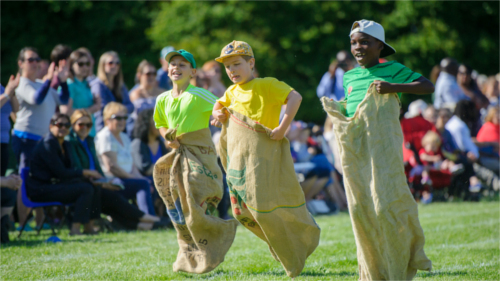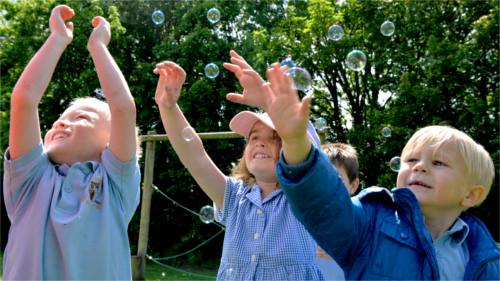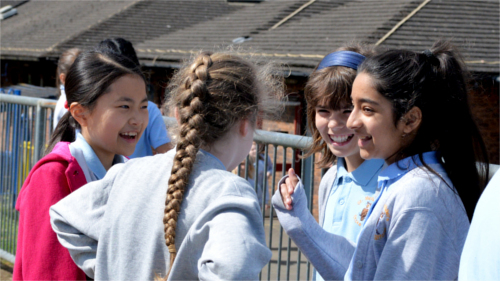Pupil Premium
Pupil Premium
Explanation, Spending Plans and Impact
What is it?
The Pupil Premium is an additional grant of money provided to schools by the government aimed at reducing the educational effects of disadvantage. In 2023-24, it is worth £1455 per eligible child. There is an additional amount called 'Pupil Premium Plus', which is targeted at children who have been adopted or who are in the care of a 'Special Guardian'. This is worth £2530 per pupil. There is a smaller amount for service children worth £335 per pupil.
Who is eligible?
The Pupil Premium is allocated to children from low-income families who are currently known to be eligible for Free School Meals in both mainstream and non-mainstream settings and children who have been looked after continuously for more than six months. It is also paid on the basis of pupils who have been eligible for free school meals (FSM) at any point in the last 6 years.
A smaller amount is allocated to children whose parents are currently serving in the armed forces. This service premium is designed to address the emotional and social well-being of these pupils.
What is it for?
As a group, national data shows that children who have been eligible for FSM at any point in time have consistently lower educational attainment than those who have never been eligible for FSM. (Note that this does not mean that all children are doing less well)
The Government believes that the Pupil Premium, which is additional to main school funding, is the best way to address the current underlying inequalities between children eligible for free school meals (FSM) and their wealthier peers by ensuring that funding to tackle disadvantage reaches the pupils who need it most.
In most cases the Pupil Premium is allocated to schools and is clearly identifiable. It is for schools to decide how the Pupil Premium is spent, since the government’s view is that they are best placed to assess what additional provision should be made for the individual pupils within their responsibility.
For further information please visit:
http://www.education.gov.uk/schools/pupilsupport/premium/b0076063/pp
What it is worth to St Michael’s
In 2022-23, we were allocated £100,550 for our Pupil Premium Grant. This year, for 2023-24, we have been allocated £99,790.
Spending priorities
Our priorities are to support those children who qualify in the following ways:
Issue Desired Outcome
1) Where PP children are at risk of falling behind their peers To reach age expected levels
2) Where PP children's attainment is below national averages To provide support to catch up to average levels
3) Where attendance is a concern To improve attendance and reduce lateness
4) Where participation in activities is a concern To ensure participation in activities such as school camp and music lessons
5) Where behaviour and emotional support is needed To provide support for mental wellbeing
Review of spending for academic year 2022-23
| Name | |
|---|---|
| Website Pupil Premium Review-2021-22.docx | Download |
Current issues for St Michael's:
1) Achievement (2021-22)
EYFS
When children start school, there is a large gap between children eligible for pupil premium and those not eligible. This is particularly evident in their speech and language skills, and this impacts on the whole of their learning. In 2021-22, 72% of children met a 'good level of development'.
In 2021-22, by the end of Reception, children in this group are less likely than their peers to reach the ‘good level of development’. 36% of PP pupils met the GLD compared to 77% of their peers.
The largest gaps were in writing and number compared to their peers.
KS1
In Year 1, 76% of all pupils passed the Phonics screening test. Fewer pupil premium pupils passed the phonics test than their peers.
Pupil Premium passing phonics test: 50% Non-pupil premium: 78%
By the end of Y2, internal KS1 teacher assessment data showed there are still some larger gaps between pupil premium children and their peers, particularly in reading and writing.
Reading gap = 32% Writing gap = 48% Maths gap = 5%
Numbers of pupil premium children are relatively small, however, one or two children make a big difference.
KS2 SATS (Last 4 sets of validated data)
In recent years, these gaps have narrowed during the course of KS2:
In 2017, the gaps diminished, particularly in writing and Grammar, Punctuation and Spelling.
Reading gap = 23% Writing gap = 10% GPS gap = 2% Maths gap = 38%
Our biggest concern was the gap in maths.
In 2018 the attainment gaps reduced, particularly in reading and writing
Reading gap = 5% Writing gap = 1% GPS gap = 27% Maths gap = 22%
Our main concern was the attainment gap in GPS.
In 2019, the attainment gaps were slightly larger.
Reading gap = 26% Writing gap = 38% Maths gap = 33% However, progress was better at +0.7 for Reading and maths and +1.3 in writing.
In 2022, after a two year break in the national assessments, children completed the KS2 tests.
Reading gap = 19% Writing gap = 23% Maths gap = 38%
The main concern was progress in writing from KS1. This was expected given the difficulty in addressing the objectives during the pandemic.
2) Participation
Without additional support, Pupil Premium children are much less likely to participate in activities that enrich the curriculum and stimulate learning.
These activities include:
Participation in after-school clubs
Attendance on trips and camps
Music Lessons
Trips to support the curriculum
2022-23 Spending Plans
If numbers of eligible children stay the same as last year we expect to receive around £120,000. Our aim is to maintain the most effective strategies from last year to enable Pupil Premium children to make good or better progress.
• Deliver high quality teaching and learning through effective classroom support for all children.
• Target children throughout the school for additional 1:1 or small group support for writing, maths and reading skills
• Use feedback such as marking and discussion with children to support their understanding in reading, writing and maths on a daily basis, to enable Pupil Premium children to make good or better progress.
• Improve overall attendance for Pupil Premium children. Focus on reducing regular absence, lateness and broken weeks so percentages are in line with or better than their peers. The more children are in school - the better they will do.
• Development of the Oracy 21 Project across the whole school including Reception and early years language development. The school is in the third year of the project.
• Continued support for pupils to access emotional learning programmes such as Thrive and provide additional opportunities and have a positive effect on their wellbeing. This includes school trips; camps; after school clubs and peripatetic music tuition.
Spending Plans 2021-24
The plan is internally reviewed on an annual basis.
| Name | |
|---|---|
| Pupil Premium Strategy Plan FINAL 2021-24.pdf | Download |
How are children’s needs identified?
Children’s attainment, progress and attendance are monitored regularly, and where issues arise children will be placed on appropriate support programmes. All children on FSM are eligible for support for the school camp in Y5 and Y6, and may also have support for other trips/educational visits as needed. Our aim is that all children who attract this grant will benefit in some way from the grant, though clearly some may have a greater level of support than others depending on their needs. When deciding how to best use the Pupil Premium funding, we look at the Educational Endowment Foundation’s Teaching and Learning Toolkit. This is an excellent way of researching how schools can spend money to improve the teaching and learning of children from low-income families.
The Educational Endowment Foundation currently suggests that the most effective strategies are: 1-1 Tuition; Metacognition and self-regulation; focusing on reading comprehension skills as well as building fluency; mastery learning and quality feedback to children through marking and discussing work.
https://educationendowmentfoundation.org.uk/evidence-summaries/teaching-learning-toolkit
The schoolis a recognised Thrive school. The Thrive approach focuses upon supporting children to develop curious, healthy minds and supports children who may need support to re-enage with their learning due to temporary emotional issues such as bereavement.
https://www.thriveapproach.com/
Since 2020, the school has been part of the Oracy 21 Project initiative. This focuses upon developing children's verbal communication skills to succeed in everyday life.
Voice 21 – The national oracy education charity
Applying for the Pupil Premium Grant 2023-24
To find out if your child/children qualify for the Pupil Premium Grant in 2023-24, please visit the link below. Additionally, you can contact the school office for further support and guidance on how to apply for the Pupil Premium Grant. The school will receive additional funding if you are successful in your application for free school meals. If your child is eligible for free school meals, they’ll remain eligible until they finish the phase of schooling (primary or secondary) they’re in on 31 March 2025. The annual household income must be under £16,190. If you work in the armed forces, the school will also receive some additional funding to support your child.
 Translate
Translate



